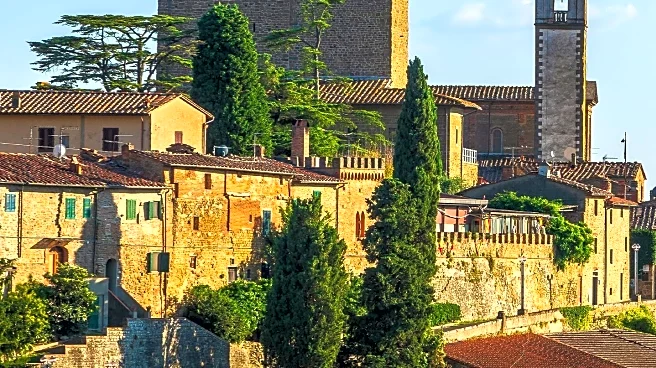What is the story about?
What's Happening?
Ravenna, Italy, offers a less crowded alternative to popular destinations like Venice and Rome, known for its mosaics and authentic food and wine. The city features eight UNESCO World Heritage Sites and is part of the Emilia-Romagna region, famous for its culinary heritage. As Italy faces overcrowding issues, Ravenna is implementing the FOOTPRINTS project, a three-year plan to balance tourism growth with cultural preservation. The project includes initiatives for accessible infrastructure and green certifications, encouraging sustainable tourism practices. Ravenna aims to involve residents in decision-making, viewing visitors as temporary citizens connected to the city's authenticity.
Why It's Important?
Ravenna's approach to regenerative tourism addresses the challenges of overcrowding faced by many Italian destinations. By prioritizing sustainability and community involvement, the city sets an example for responsible tourism development. This strategy can enhance the visitor experience, preserving cultural heritage while supporting local economies. As travelers seek more authentic and less crowded experiences, destinations like Ravenna can attract tourists looking for meaningful connections with the places they visit. The emphasis on sustainability aligns with global trends towards eco-friendly travel, offering a model for other cities facing similar challenges.
What's Next?
Ravenna will continue to implement the FOOTPRINTS project, focusing on sustainable tourism practices and community engagement. The city's efforts may inspire other destinations to adopt similar strategies, promoting responsible tourism development. As travelers become more aware of the impact of their choices, destinations that prioritize sustainability and authenticity may gain a competitive edge. Ravenna's initiatives could lead to increased visitor satisfaction and long-term benefits for the local community.
Beyond the Headlines
The cultural and ethical dimensions of regenerative tourism highlight the importance of balancing economic growth with cultural preservation. Ravenna's approach reflects a broader shift towards valuing community involvement and sustainability in tourism development. This perspective challenges traditional tourism models, emphasizing the need for collaboration between visitors and residents to create mutually beneficial experiences.
AI Generated Content
Do you find this article useful?















